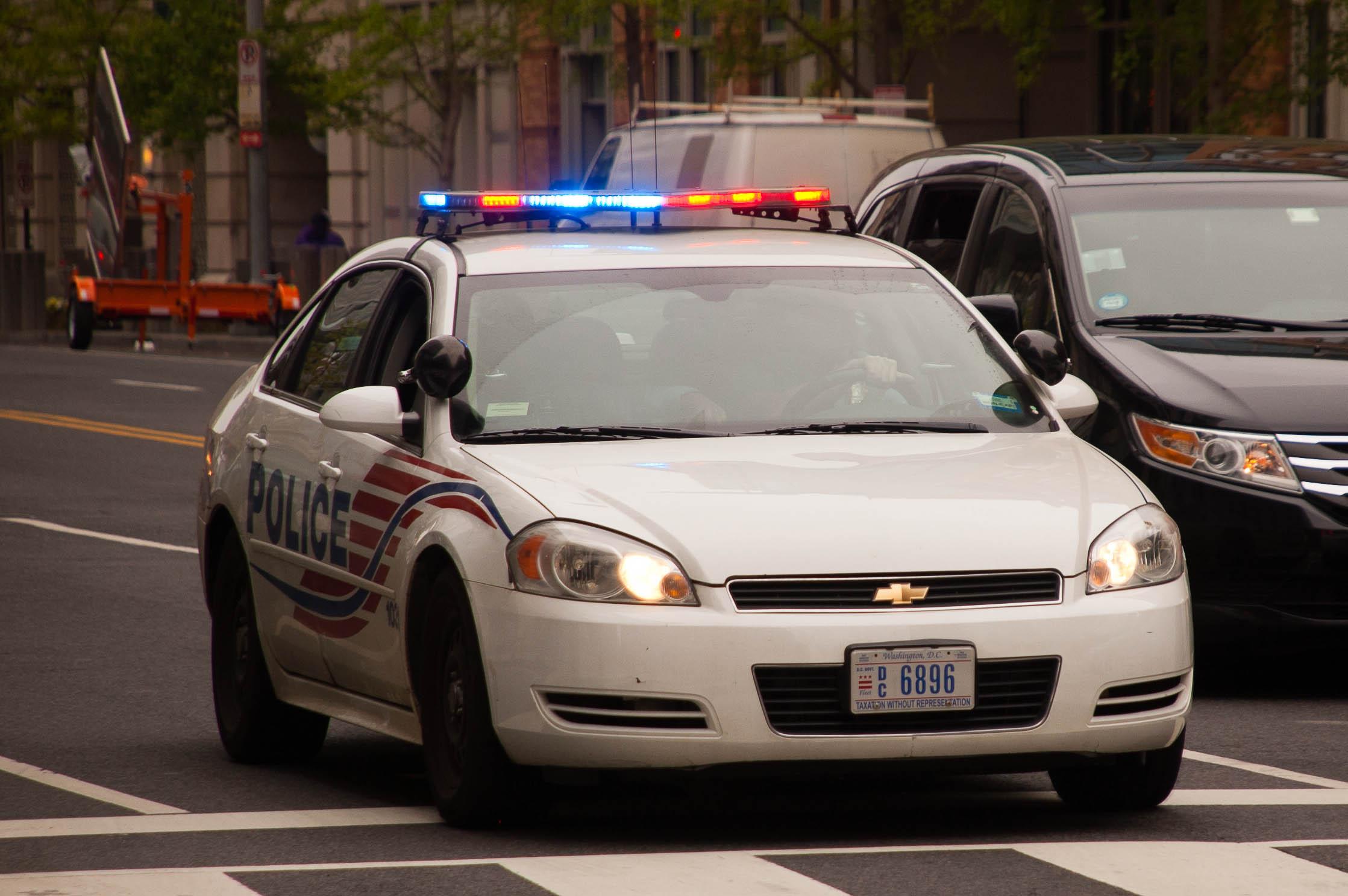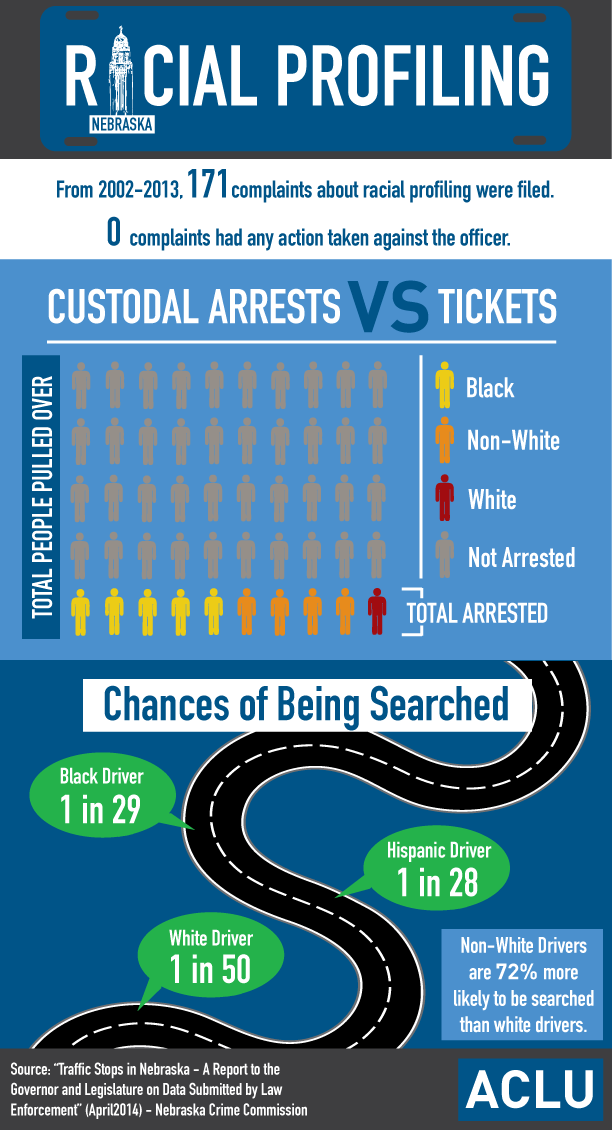Tasers release 50,000 volts of electricity that jolt the body's central nervous system. While often classified as a "less-lethal" weapon, Amnesty International reports that there have been over 540 Taser-related deaths in the United States in the past thirteen years. Because of the dangers associated with using a Taser, the Department of Justice has provided guidelines for safely using a Taser. The ACLU evaluated Nebraska law enforcement agencies adherence to these guidelines.
These guidelines include:
- Taser deployment is only justified when a subject is exhibiting active aggression or actively resisting in a manner that will cause injury to themselves or others.
- Law enforcement officers must avoid using Tasers in a coercive or punitive manner, which means the avoidance of drive-stun mode and ensuring that multiple shocks are warranted.
- Targeting sensitive body areas - including the chest - can increase the risk of injury or death and thus should be avoided.
- Lastly, officers must be aware that members of vulnerable populations may be more susceptible to injury or death and should be Tasered only in extreme circumstances.
The ACLU's investigation found that most policies failed to comply with the above guidelines. Policies frequently provided minimal information that would help a law enforcement officer determine if Taser use was appropriate.
In addition to asking for policies, the ACLU also asked for use of force reports related to Tasers. According to the ACLU, it is difficult to compare one department to another because the reporting forms vary greatly. For example, some ask for race of the individual who was Tasered and others do not.
The reports reviewed by the ACLU documented several instances when Tasers were used against the recommendations of the Department of Justice. These include:
- An elderly disabled man with dementia Tasered by Omaha Police
- A man Tasered by Grand Island Police for "staring down" officer from hospital bed.
- A Hastings man Tasered in retaliation for spitting on officers.
- A woman with mental illness Tasered while sitting in Grand Island.
- A ten year old child Tasered by Kearney Police in a public school.
The report has minimal information on two of Nebraska's largest police departments, the Omaha Police Department and the Lincoln Police Department. While these agencies have provided records in the past, both agencies refused to do so.
Date
Tuesday, August 19, 2014 - 12:00am
Featured image
Show featured image
Hide banner image
Related issues
Police Practices
Documents
Show related content
Tweet Text
[node:title]
Type
Style
Standard with sidebar
After receiving many individual reports of intimidation or difficulty making a complaint to a local law enforcement agency, the ACLU of Nebraska investigated the practices of the 31 largest law enforcement agencies in Nebraska. The findings were released Tuesday in a report entitled For the Good of the Public: How Nebraska Police Complaint Processes Fail the Public. The report found most agencies had complaint procedures that did not comply with expert guidelines.
The ACLU reviewed the websites of 31 law enforcement agencies and found that only eight provided information about their complaint process online. Even fewer provided a walkthrough of the complaint process. Many agencies failed to provide a phone number on their website for taking complaints.
A smaller number of agencies were surveyed by phone. According to the report, some agencies were unwilling to discuss complaint processes over the phone unless someone wanted to file a complaint. Other agencies required someone to come to the office in-person to file a complaint, one even requiring that the visit take place during business hours.
Date
Tuesday, August 12, 2014 - 12:00am
Featured image
Show featured image
Hide banner image
Related issues
Police Practices
Documents
Show related content
Tweet Text
[node:title]
Type
Style
Standard with sidebar
Nebraska began collecting racial profiling data in 2002. In 2012, the Nebraska Legislature renewed the law that mandated the data collection and expanded the Nebraska Crime Commission's authority to act on the data from local agencies. According to the ACLU report, the Crime Commission has yet to use their authority.
The ACLU report focuses on three findings:
The ACLU has several recommendations for Nebraska agencies:
- People of color are more likely to be pulled over. Black drivers in Omaha are pulled over twice as often as they should be according to census data. In Lincoln, black drivers are pulled over three times as often.
- People of color are more likely to be arrested. A white driver has a 1 in 48 chance of being arrested. Drivers of color have a 1 in 13 chance of being arrested. The data showed that there was not a significant difference in the actual offenses committed by the drivers.
- People of color are more likely to be subjected to searches. 1 in 50 white drivers were searched while 1 in 30 drivers of color were searched.
- Mandate anti-bias trainings through the Nebraska Law Enforcement Training Center.
- Bring law enforcement complaint processes into alignment with Department of Justice recommendations.
- Follow Department of Justice recommendations for use of body-worn cameras and dash cameras.
Date
Tuesday, August 26, 2014 - 12:00am
Featured image
Show featured image
Hide banner image
Related issues
Police Practices
Documents
Show related content
Tweet Text
[node:title]
Type
Style
Standard with sidebar

